
The Keychron Q5 HE is one of the best gaming keyboards right now. It packs a plethora of gaming features in a sturdy, all-metal body. Its Gateron Double-Rail Nebula switches are highly customizable as you can adjust each key’s actuation and even assign up to four commands. What makes customization so effortless is the web-based Keychron Launcher.
Built exceptionally well, the Q5 HE is made entirely of metal, making it sturdy and durable. It sports a lovely design too. And not only is the keyboard a powerhouse for gaming, but it’s fantastic to type on too.
But is it worth the premium? The Q5 HE is available for $249 which is a lot of money. The keyboard faces fierce competition from its Keychron counterparts and from other brands.
For the complete breakdown, read my full Keychron Q5 HE review.
Keychron Q5 HE review: Cheat sheet
- What is it? A 96% layout keyboard with Hall Effect switches and 1,000Hz polling
- Who is it for? Gamers who also spend a lot of time typing
- How much does it cost? The Keychron Q5 HE is available for $249 / £223
- What do we like? The responsive magnetic switches, plethora of gaming features, great typing experience, solid and sturdy build, and intuitive web-based software
- What don’t we like? The limited switch choice, 1,000Hz polling only, and high price point
Keychron Q5 HE review: Specs
Keychron Q5 HE review: The ups
From its super responsive magnetic switches with adjustable actuation to its lovely build, the Keychron Q5 HE is a fantastic keyboard.
Sturdy build

Keychron’s Q-Series keyboards are always made fully of metal — CNC machined aluminum, to be precise. And the Keychron Q5 HE is no different. There’s no trace of plastic used anywhere (except for the PCB), which makes it really heavy.
The Q5 HE weighs 4.82 pounds, and feels heavy enough to fell a tree. But thankfully, it is lighter than some other Q-Series boards, like the Q65 Max (5.33 pounds, $209) and the Q14 Max (5.3 pounds, $209). Its heavy weight, alongside its 96% layout, also means that the Q5 HE is not meant for traveling. It’s designed to stay firmly put on your desk.
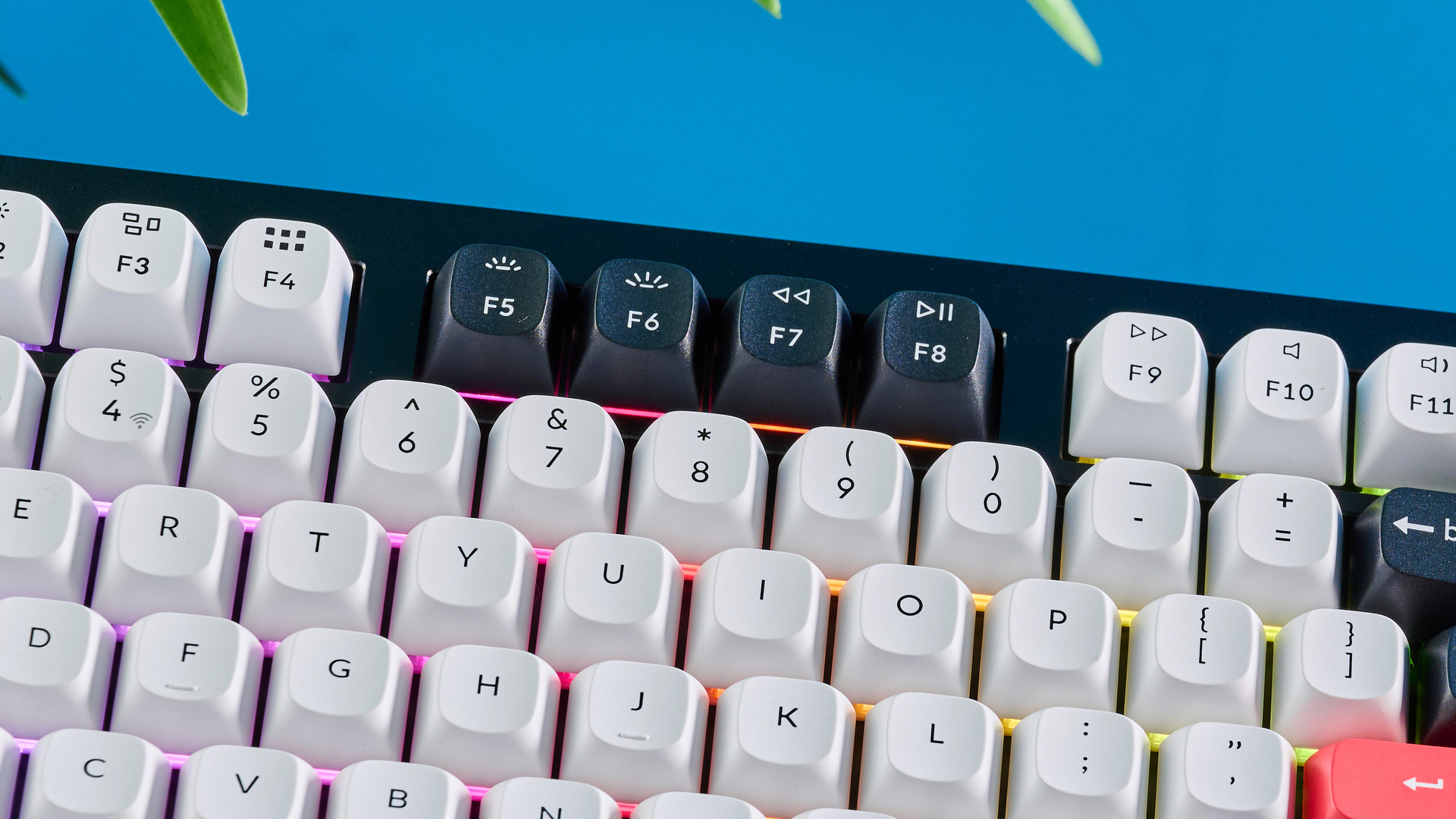
Adding to the Q5 HE’s appeal and durability is the use of double-shot PBT keycaps. Now, if you’re familiar with my coverage of keyboards, you’ll know that I’ve complained about expensive keyboards — like the Razer Pro Type Ultra ($159) and the Corsair K65 Plus for Mac ($179) using less-durable ABS keycaps instead of PBT ones. PBT keycaps are more resistant to wear and tear so you know you’re getting bang for your buck here.

The Q5 HE’s colors are pretty too. You can get the keyboard in either Carbon Black or Shell White colorways. I tested the former which has a black body and a combination of white, red and black keycaps gracing the top — and I think it looks lovely. You can see what the Shell White colorway looks like in this review of mine.
Magnetic switches
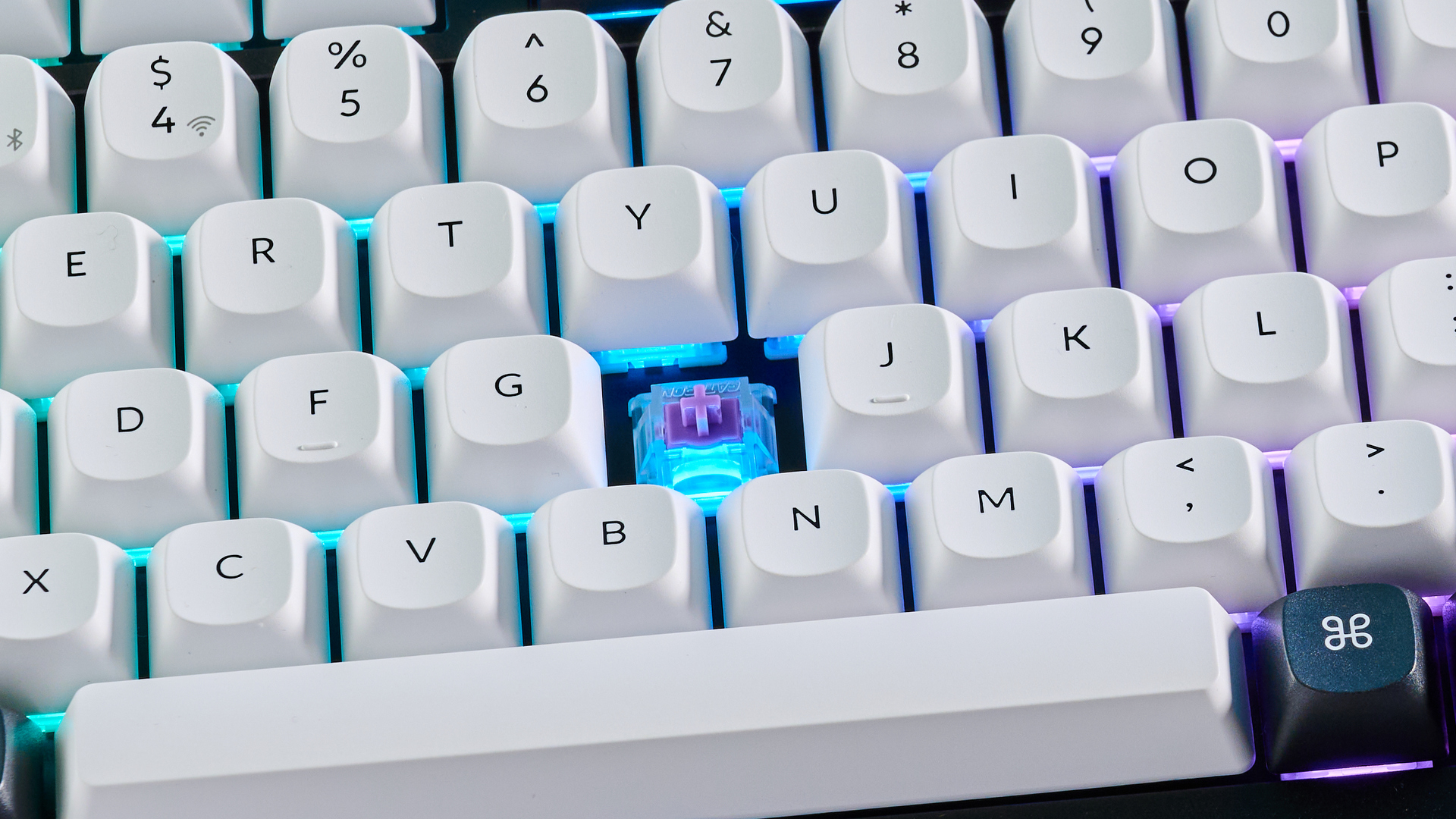
The Keychron Q5 HE comes fitted with pre-lubed Gateron Double-Rail Nebula magnetic switches which are linear by nature. They require just 40g of force to activate, and like other magnetic switches, they have adjustable actuation all the way down to 0.1mm and up to 3.8mm. Depending on the game you’re playing, or if you’re typing, you can adjust each key’s sensitivity accordingly.
Actuation adjustment is done via web-based software Keychron Launcher, and this is one software I’ve always sung praises of — and I’ll get to that in a second. I used Keychron Launcher to set the actuation of all keys down to 0.1mm for ultra-responsive gameplay in the likes of Hitman and Counter-Strike 2.
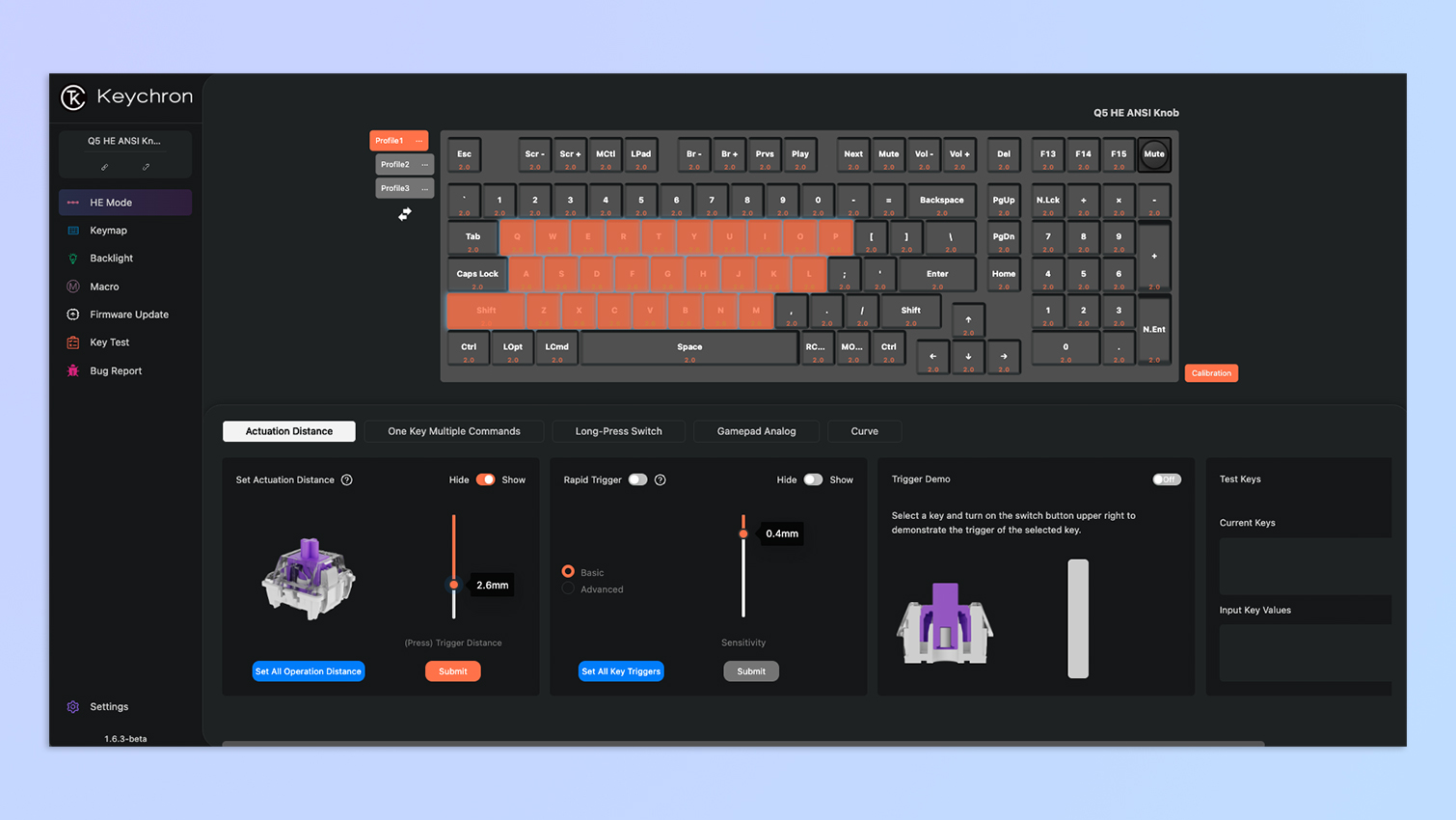
In Counter-Strike, since I didn’t have to press the movements and action keys down all the way for my commands to register, I could quickly swap between weapons or crouch and then immediately throw a grenade. This proved invaluable in death matches.
Another thing I like is that the Q5 HE features quad-actuation points, which means you can assign up to four actions to a single key based on how deeply you press it (two actions on the downstroke, two on the way back up).
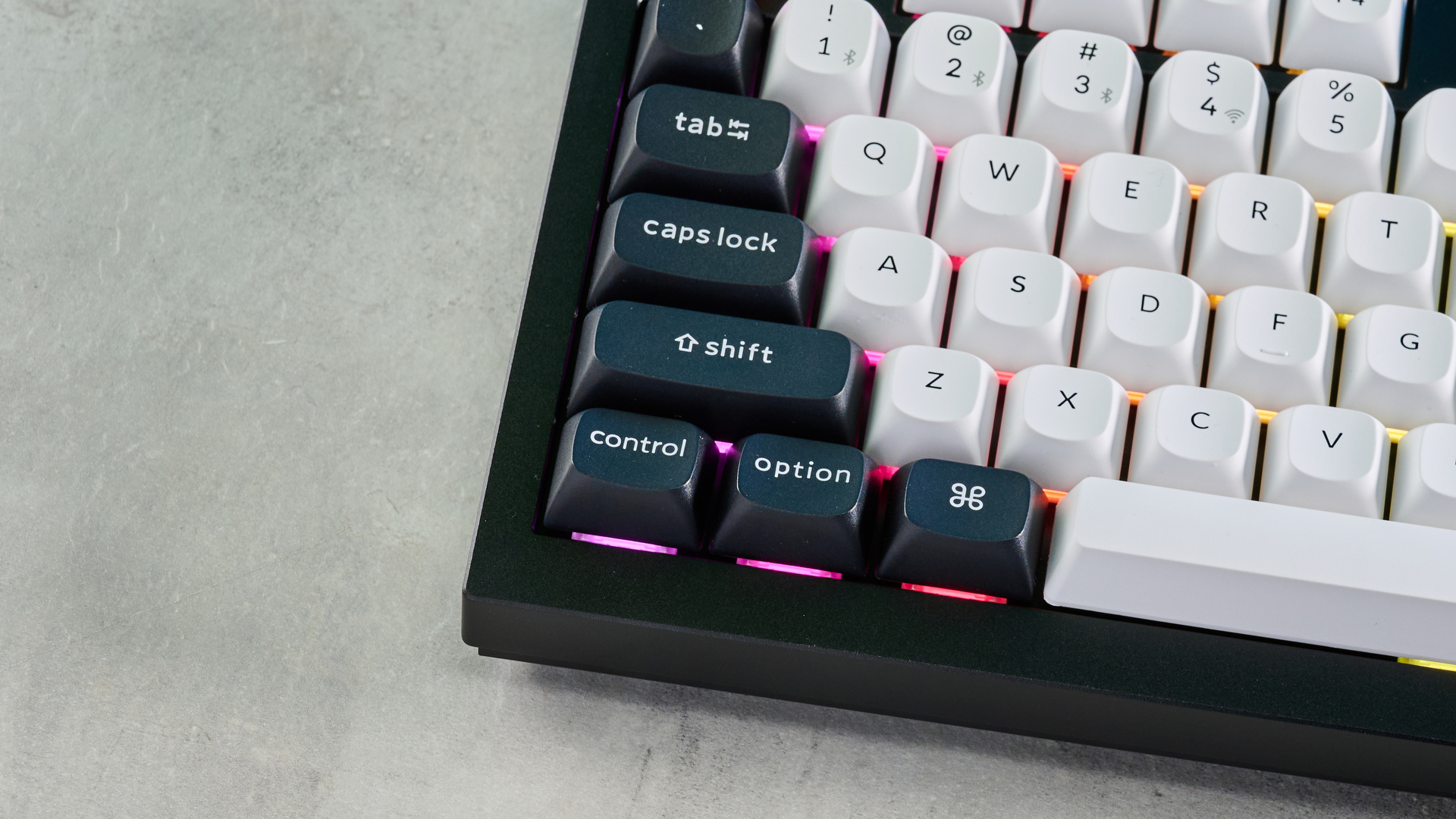
Whenever I test a magnetic keyboard with this feature, I customize the W key so that short-pressing it makes the character walk while long-pressing makes the character run/sprint. The Q5 HE manages this really well too, in both Counter-Strike 2 and Hitman.
This can also come in handy in racing titles, as you can customize the keys in such a way that short-pressing makes the car accelerate and long-pressing activates the nitrous boost. However, most people will likely want to use one of the best PC game controllers for racing games instead.
Other gaming features
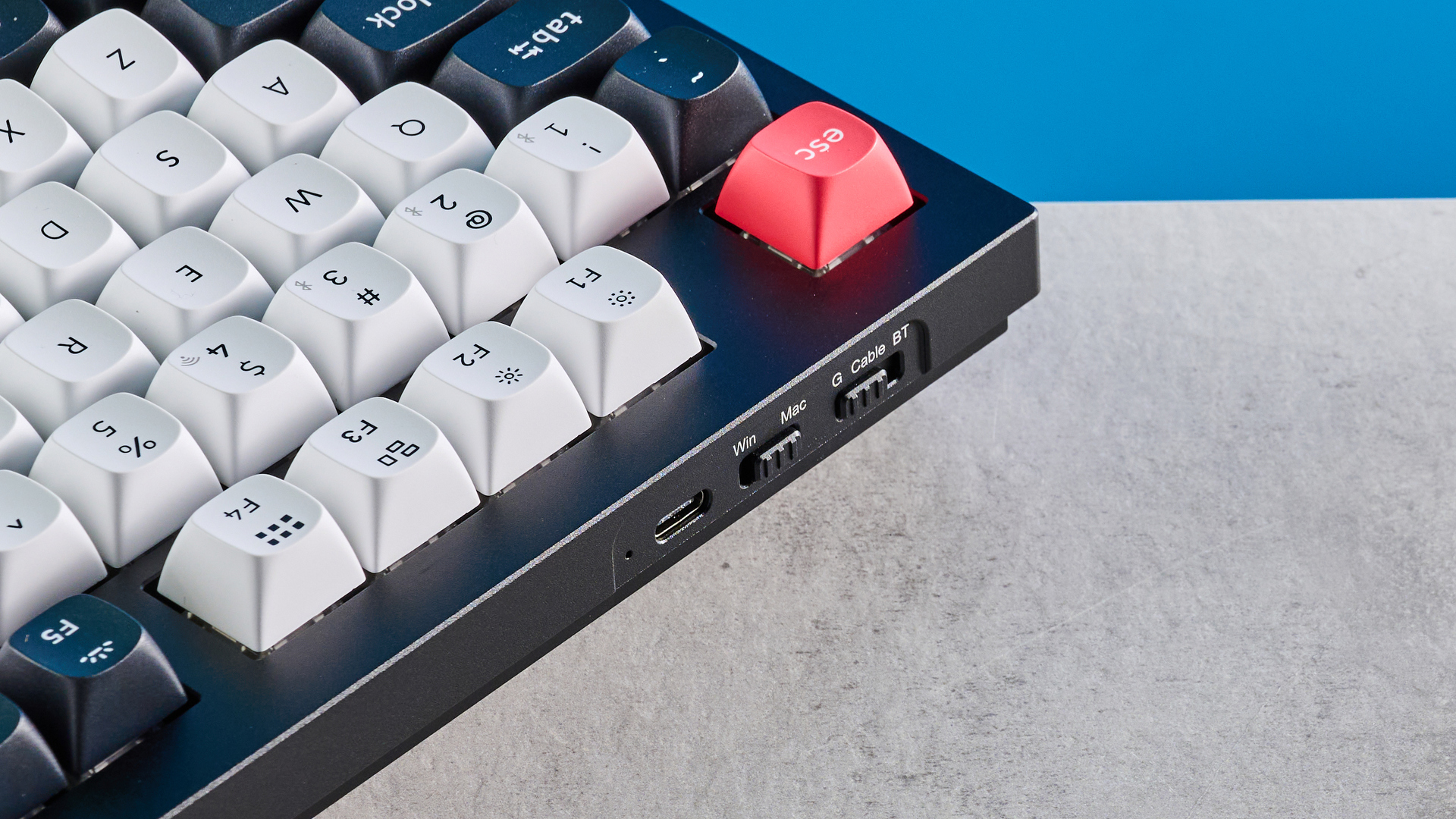
The Keychron Q5 HE has other useful gaming features too, such as Rapid Trigger. This comes in handy when you want to rapidly press keys in quick succession and while ensuring all inputs are recognized.
Basically, it enables near-instantaneous switch reset when lifting. In Counter-Stike 2, this resulted in me being able to counter-strafe quickly and peeking around corners.
You also get a 1,000Hz polling rate over a wired connection (via USB-C) which decreases the possibility of missed inputs due to latency issues. In my testing, I didn’t notice any input lag. While 1,000Hz polling is fine for most gamers, many magnetic keyboards offer 8,000Hz polling these days. 8,000Hz is usually overkill for most players, but if you’re a hardcore competitive gamer, that’s something you’ll want in a keyboard.
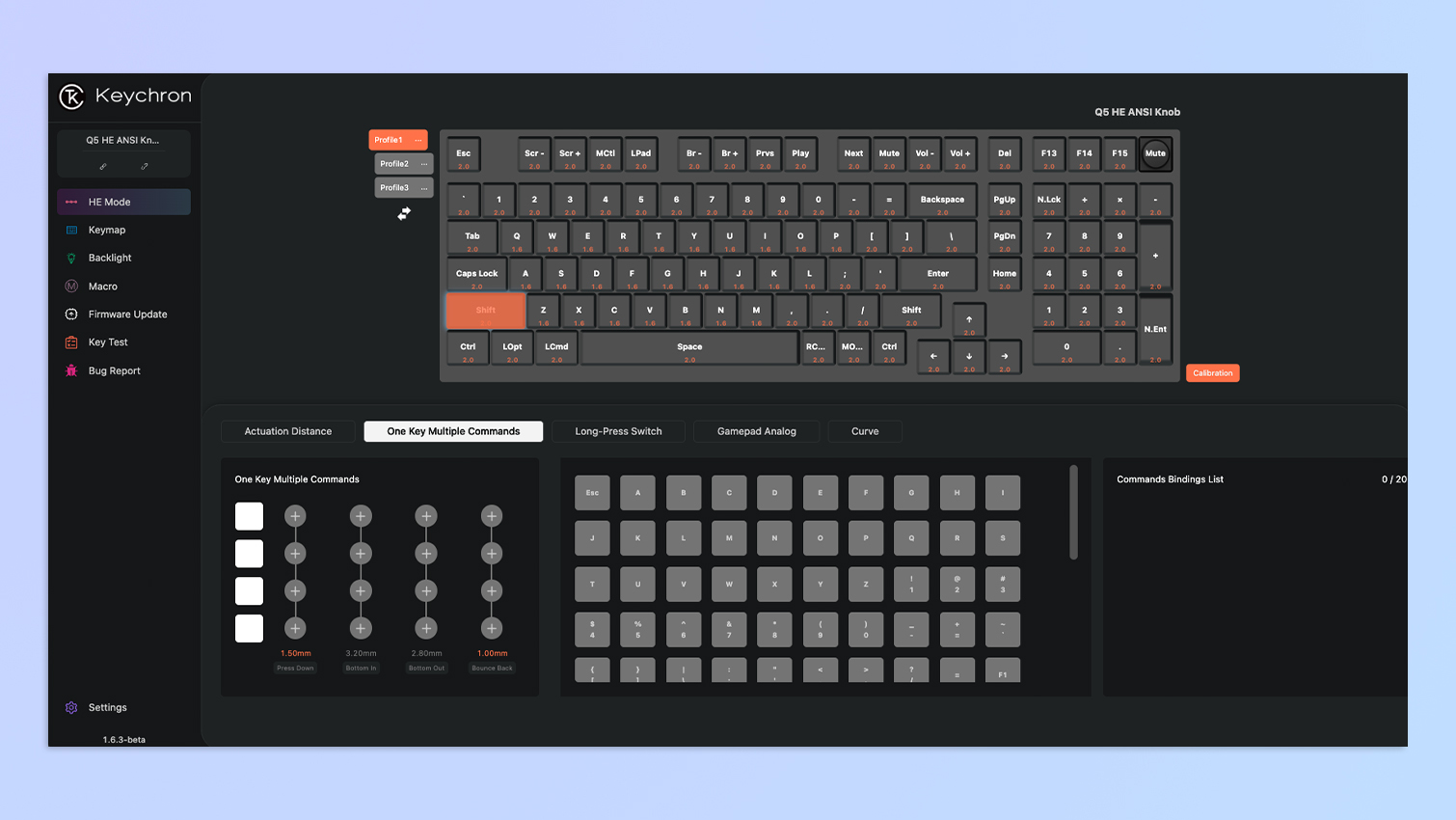
Flashing and updating the Q5 HE’s firmware also adds the ability to enable Last Key Prioritization, or Snap Tap. This is a type of Simultaneous Opposing Cardinal Direction (SOCD) resolution, which determines how the keyboard resolves two keys with opposing outcomes that actuate at the same time and conflict.
Snap Tap prioritizes the last key pressed which lets you draw to a complete stop immediately from a sideways strafe by pressing the opposing direction key. While this can come in handy in certain games, like Valorant, be warned that using Snap Tap will get you kicked out of games like Counter-Strike 2.
Great for typing

Besides being a gaming powerhouse, the Keychron Q5 HE is fantastic for productivity too. It comes with a number pad, page navigation buttons, and a full row of function keys. The keyboard’s double-shot PBT keycaps feel soft to touch and their OSA-profile makes them very comfortable to type on.
Since the switches require just 40g of force to activate, my hands didn’t feel fatigued at all after a full day’s worth of typing. The Gateron Double-Rail Nebula switches aren’t very loud either, so I could appreciate their lovely sound without disturbing my coworkers too.
As with other magnetic keyboards, I took a few typing tests at 10fastfingers.com to see how the Q5 HE fared against others I’ve tested. I used Keychron Launcher, again, to set different actuation points for all keys. You can see the results above.
I'm very happy with the results. The more sensitive the keys got, the better I typed. I didn’t have to press the keys all the way down which resulted in me being able to type quickly.
Customization right from your browser
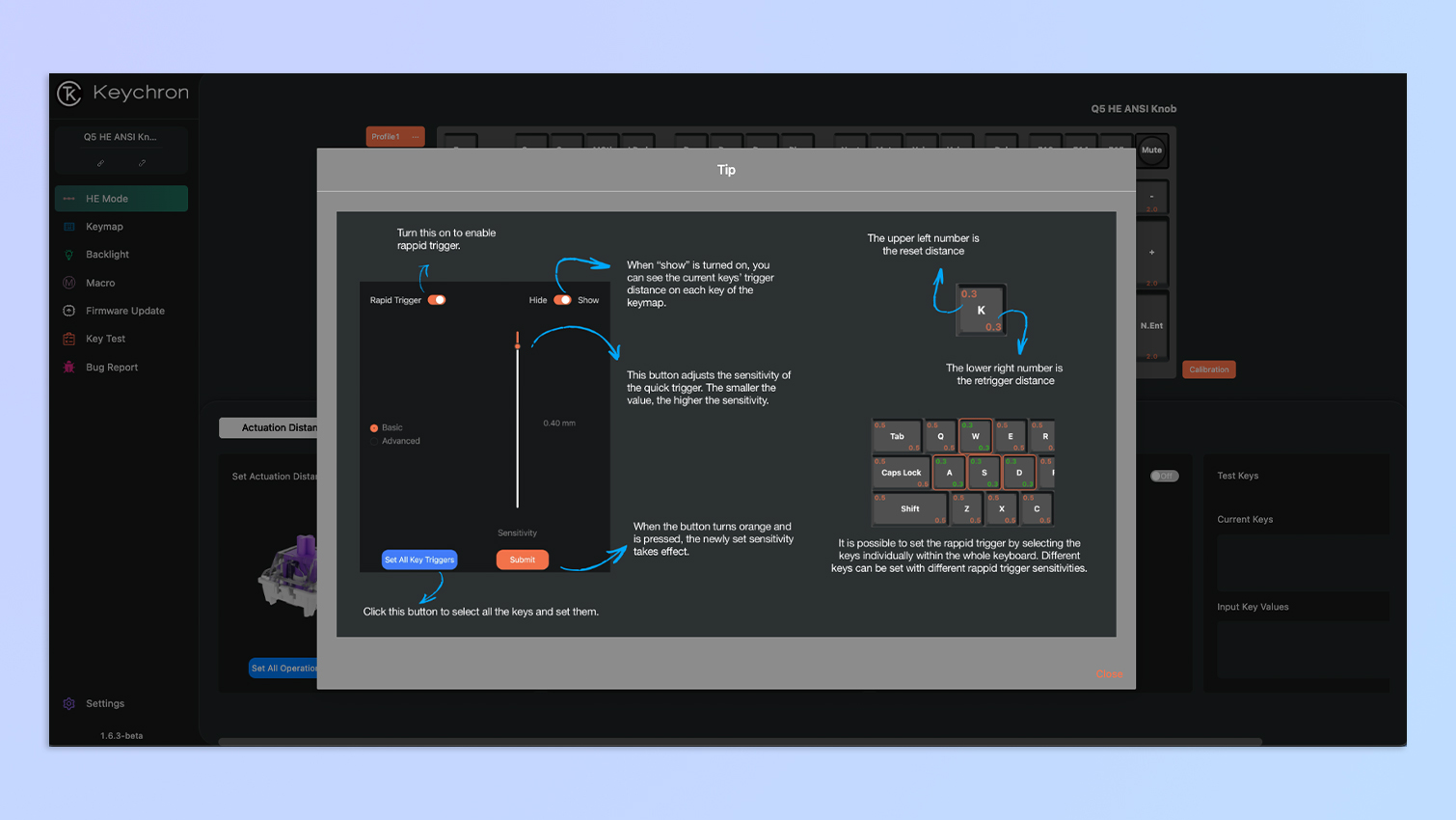
As I mentioned up top, the Keychron Q5 HE can be customized via Keychron Launcher, a web-based software that’s extremely easy to use. You can customize each key’s actuation, assign quad-actuation points, enable Rapid Trigger and Snap Tap, choose from numerous RGB effects, and more.
You can also customize up to three profiles either for various gaming titles or for work and save them onto the Q5 HE’s internal memory.
I always appreciate web-based software as my work-sanctioned MacBook Air M2 doesn’t allow me to download proprietary software onto it. Keychron Launcher takes the hassle out of the customization process.
Keychron Q5 HE review: The downs
The Keychron Q5 HE comes with just one set of switches, and it faces fierce competition from cheaper keyboards.
Limited switch choice
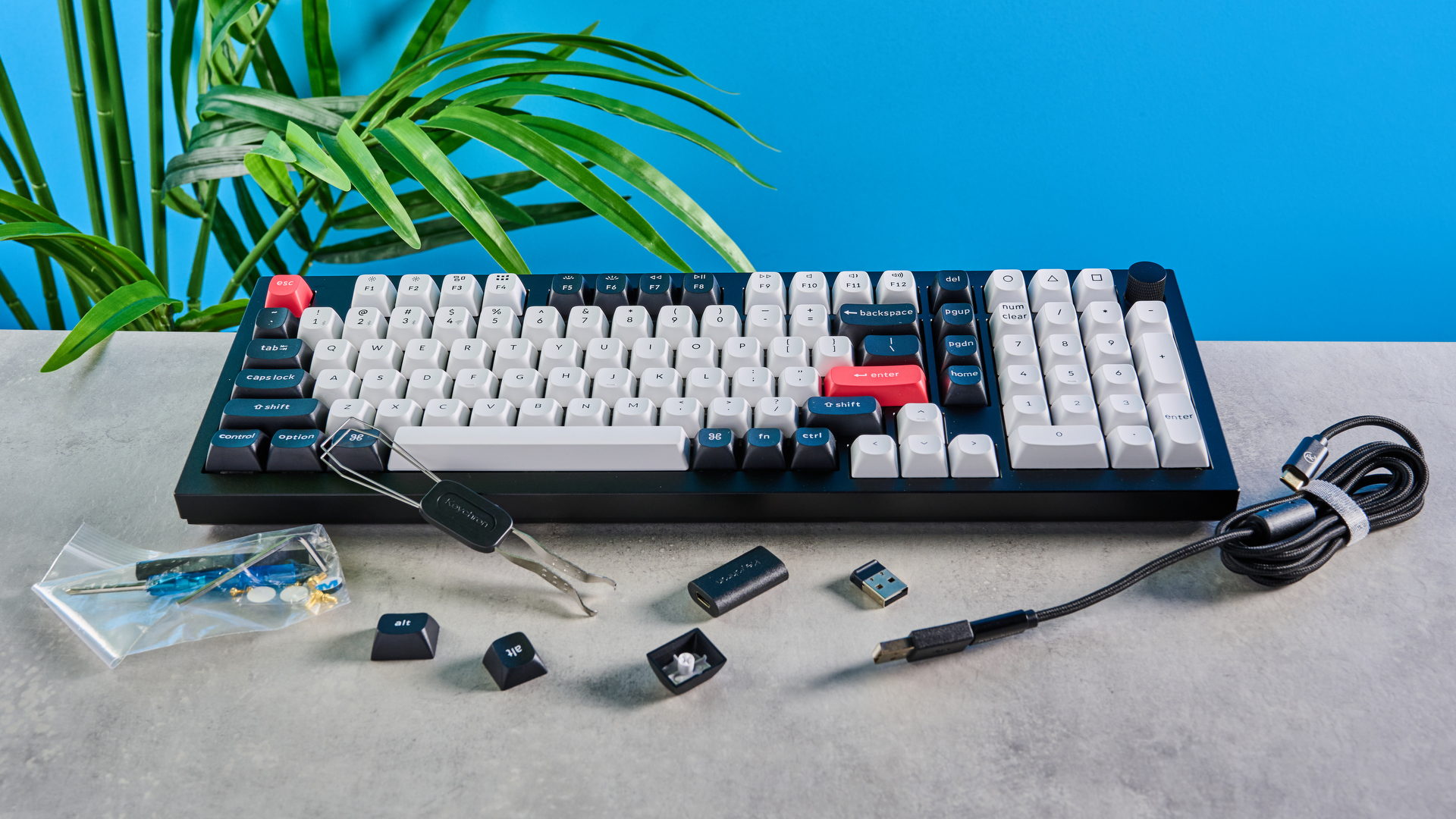
Much like other magnetic keyboards, the Keychron Q5 HE doesn’t offer much in terms of switch choice. At the time of writing, you could only get the Gateron Double-Rail Nebula switches. We’ve always mentioned this as a hiccup when reviewing magnetic keyboards, but the Q5 HE offering just one set instead of most others offering two or three is disappointing.
One thing to note, though, is that the Q5 HE is compatible with all Gateron Double-Rail switches — Dawn, Nebula and Aurora — but that means you’ll have to spend extra on the Dawns and Auroras.
Expensive
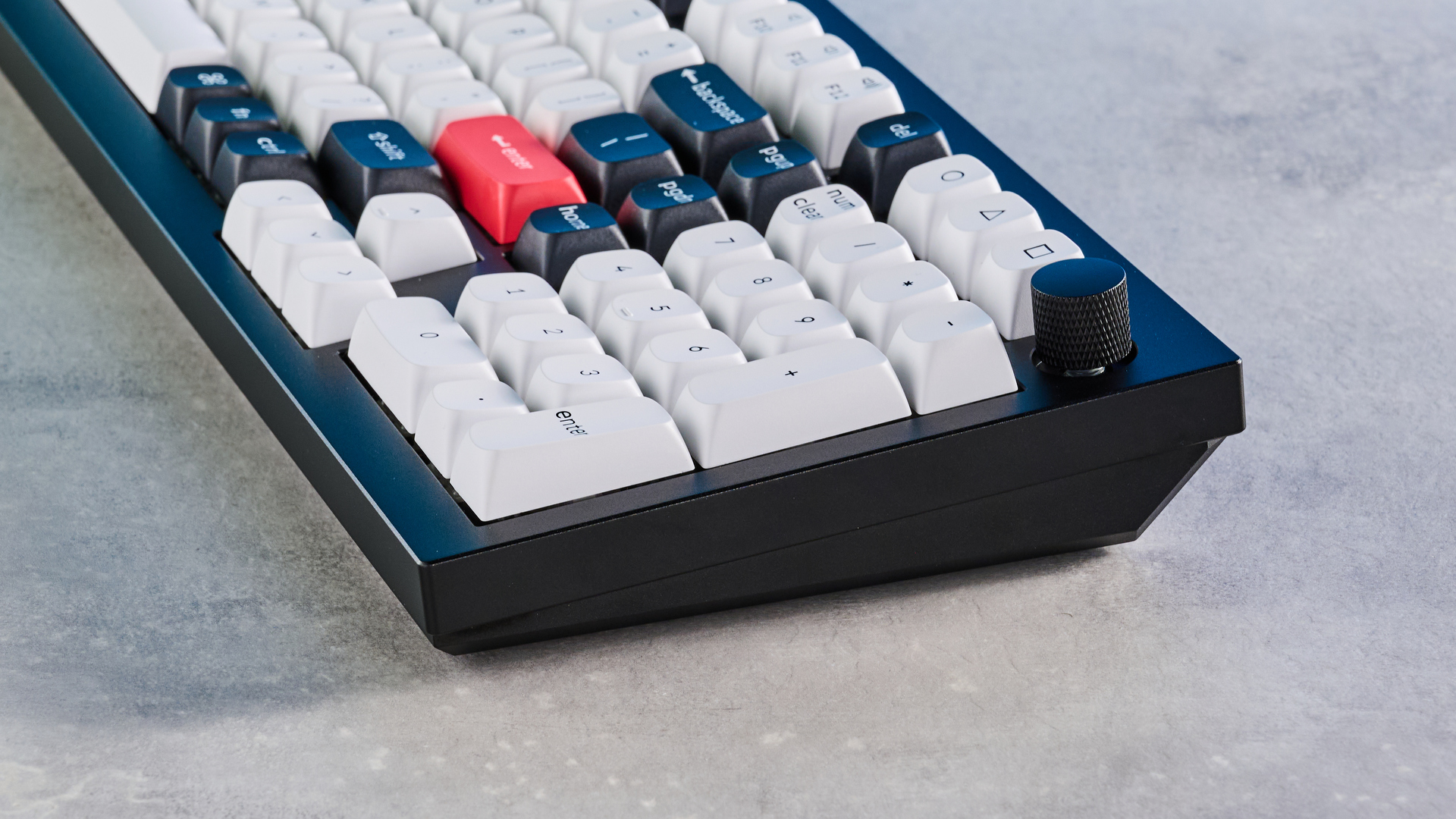
There’s no beating around the bush: all of the Keychron Q5 HE’s outstanding features come at a steep price. The keyboard costs $249 at Amazon U.S. / £223 at Keychron U.K. and even for a magnetic board of its calibre, that’s a lot of money, especially when you don’t even get 8,000Hz polling.
Cheaper keyboards like the Lemokey L5 HE ($220), the Wooting 80HE ($199), the Corsair K70 Pro TKL ($179) and the Keychron K2 HE ($130) all come with the aforementioned features and perhaps offer better value for money. If you want to save some money, these are the keyboards I’d recommend instead of the Q5 HE.
Keychron Q5 HE review: Verdict
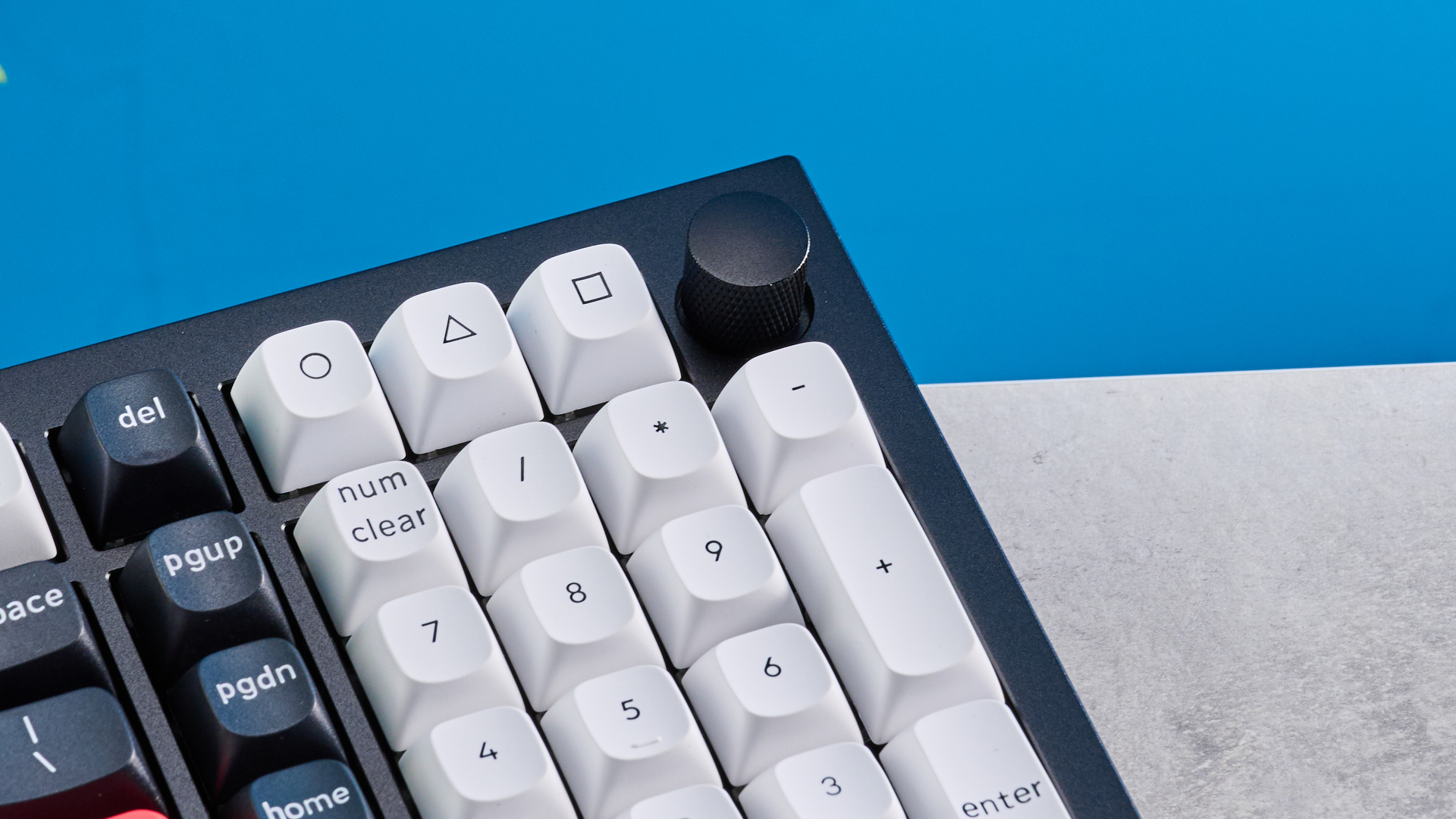
As magnetic keyboards go, the Keychron Q5 HE is an absolute beast. Its Gateron Double-Rail Nebula switches are highly responsive. Each key’s actuation point can be adjusted all the way down to 0.1mm, and you can assign multiple functions to one key too. Rapid Trigger can also be enabled if you want to gain an advantage.
All customization is done through Keychron Launcher which is extremely easy to use. The keyboard itself is built extremely well, and it’s lovely to type on too.
However, the Q5 HE faces fierce competition from other similarly priced — and even cheaper — keyboards which offer all these features and 8,000Hz polling. The Q5 HE isn’t cheap either.
But if you do decide to spend your hard earned money on the Q5 HE, you won’t regret it. Testing it has been a delight, and it has earned a spot on my desk for now.







